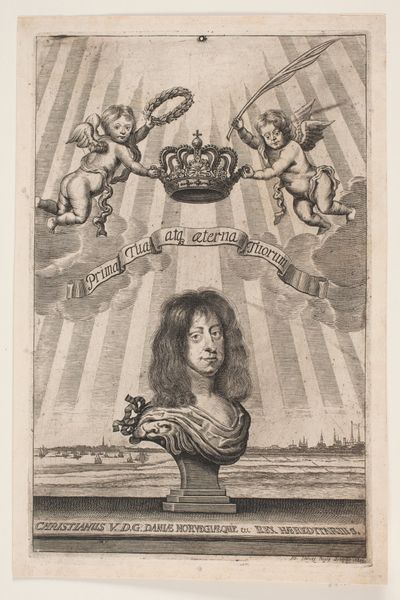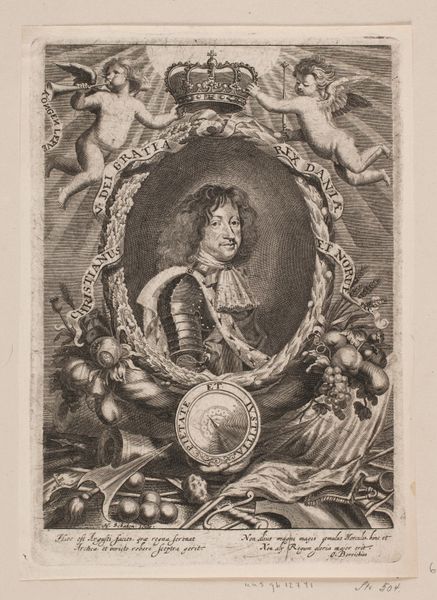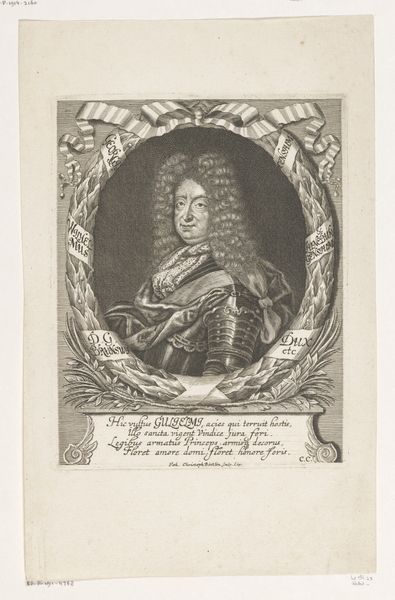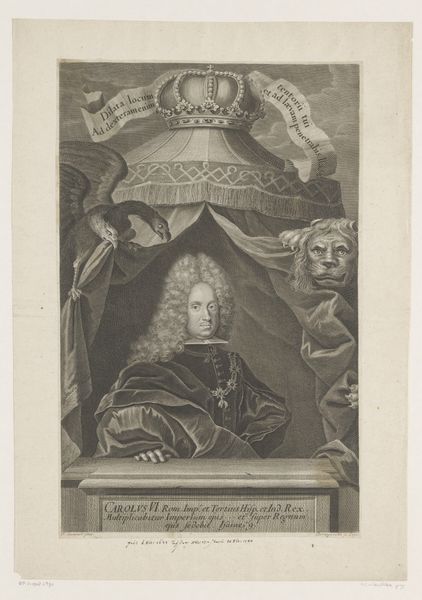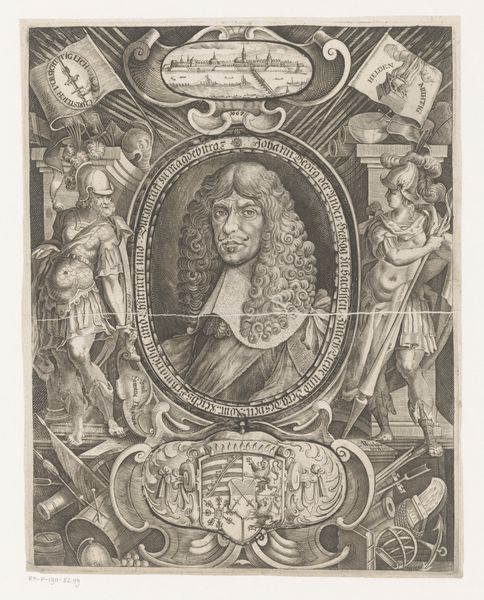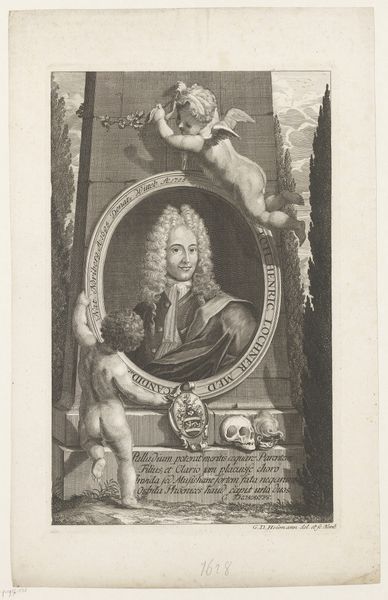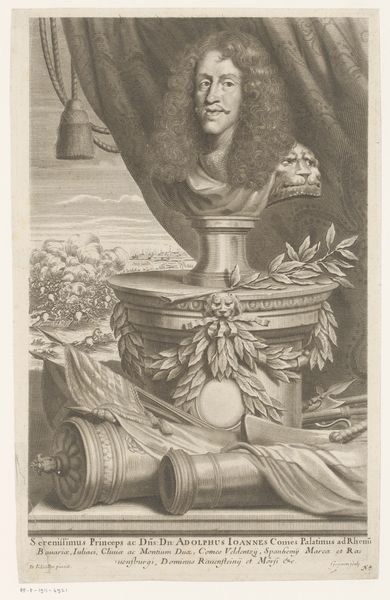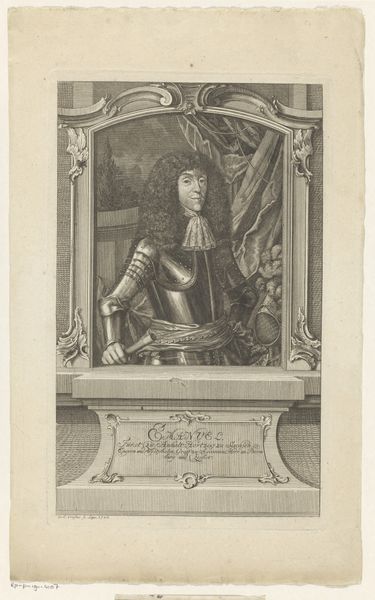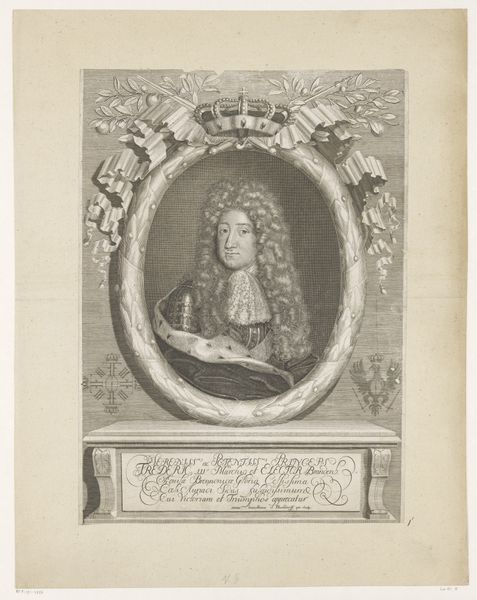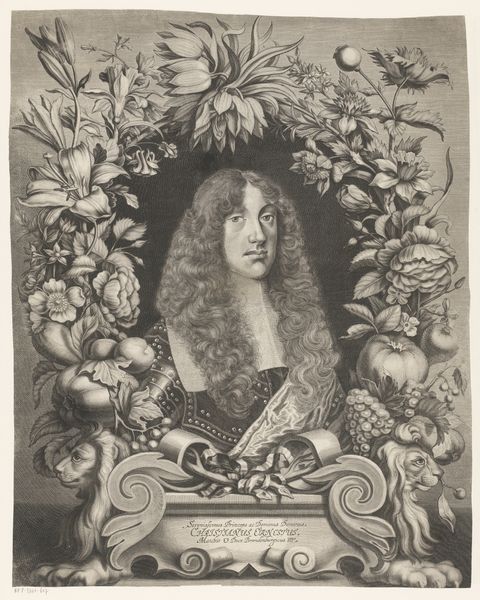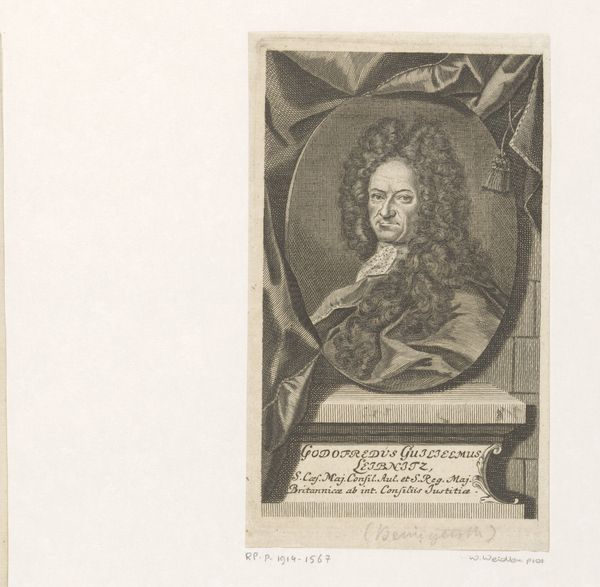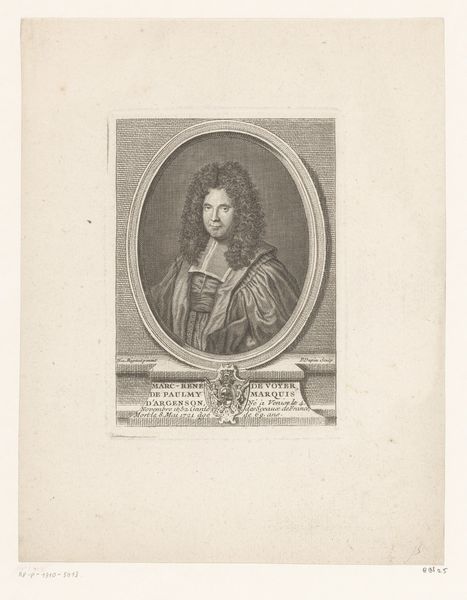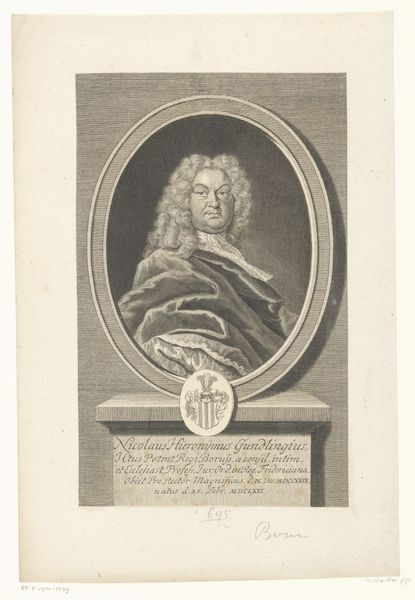
print, engraving
#
portrait
#
baroque
# print
#
history-painting
#
academic-art
#
engraving
Dimensions: 297 mm (height) x 191 mm (width) (plademaal)
Editor: This is a rather striking engraving, a portrait of Christian V made in 1670 by Albert Haelwegh. It is interesting that it is made of print. It's so intricate! How can you interpret such a work from a materialist point of view? Curator: Well, consider the *means* of production here. Engraving wasn't just about replicating an image. It was a skilled craft, often involving workshops and apprenticeships. The very act of transferring this royal image onto a plate, and then mechanically reproducing it, democratizes access, doesn’t it? It moves the King out of the Palace and into everyday spaces, though still framed by artistic conventions. Editor: I suppose, though it still seems like something that would be pretty difficult and require a lot of skill! Curator: Exactly! The labor is key. Think of the time invested, the specialist tools involved. Where did Haelwegh learn these skills? Who funded the print production? And perhaps most importantly, who *consumed* these prints? Understanding that trajectory – production, distribution, consumption – that's the heart of a materialist reading. Also the notion of this piece being black and white instead of painted brings the viewer to have a different perception. Editor: So, by examining the materials and production processes, we can learn more about the society that created and consumed the artwork. Is that correct? Curator: Precisely. It shifts the focus from just aesthetics or symbolism to the socio-economic context in which art is created. We see beyond just a portrait and grasp a bit about labor, commerce, and cultural diffusion of the royalty’s image. Editor: It really gives a fresh understanding! Thank you.
Comments
No comments
Be the first to comment and join the conversation on the ultimate creative platform.
